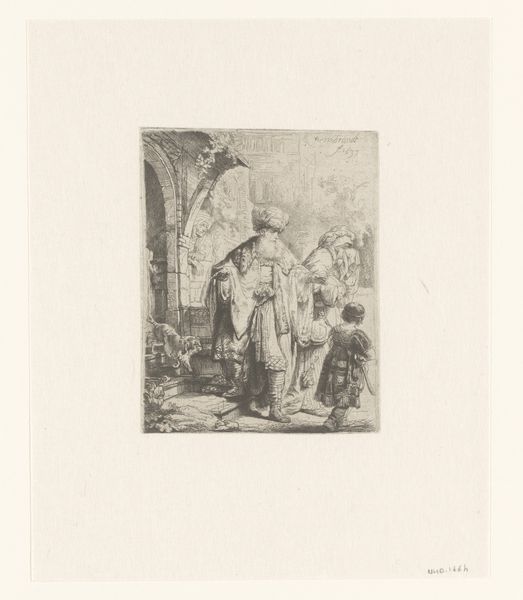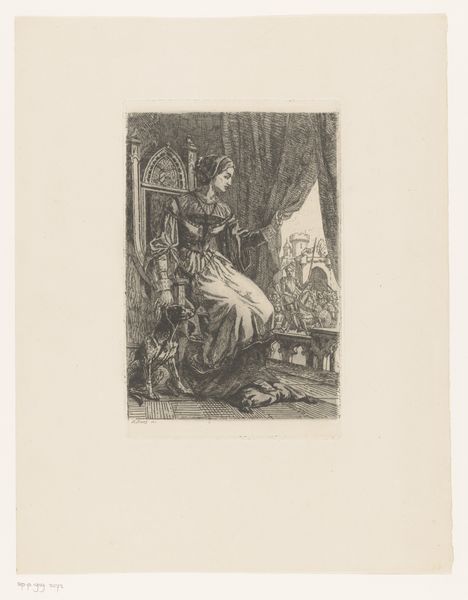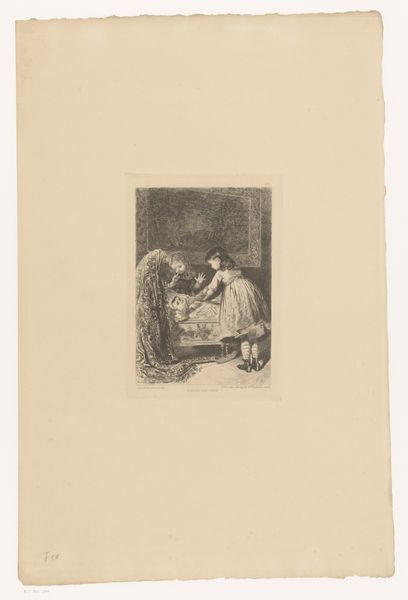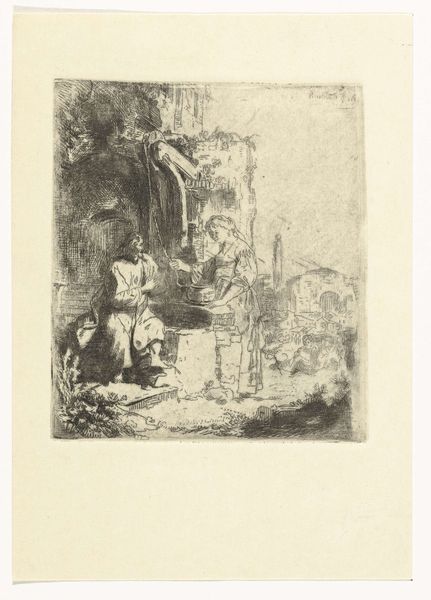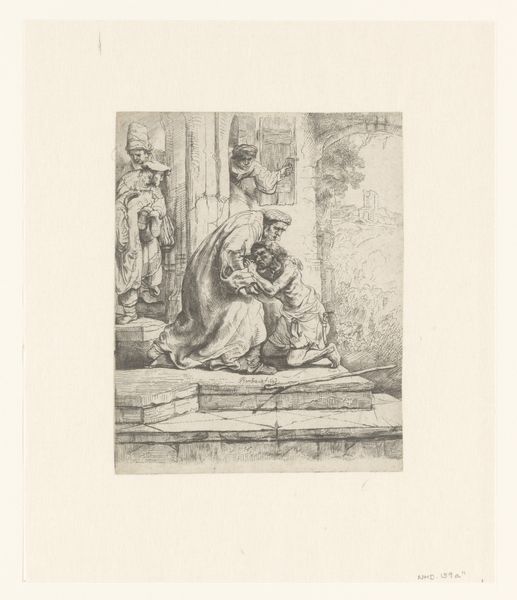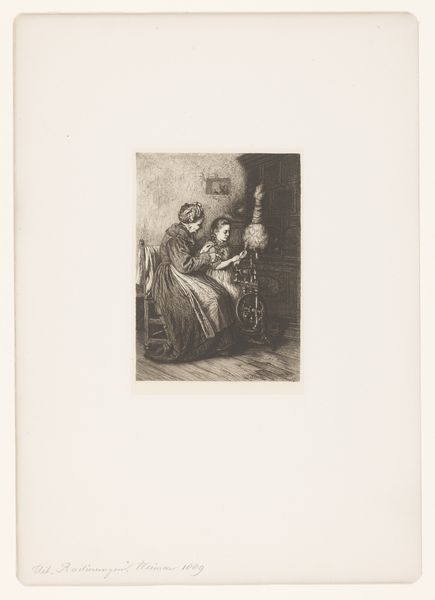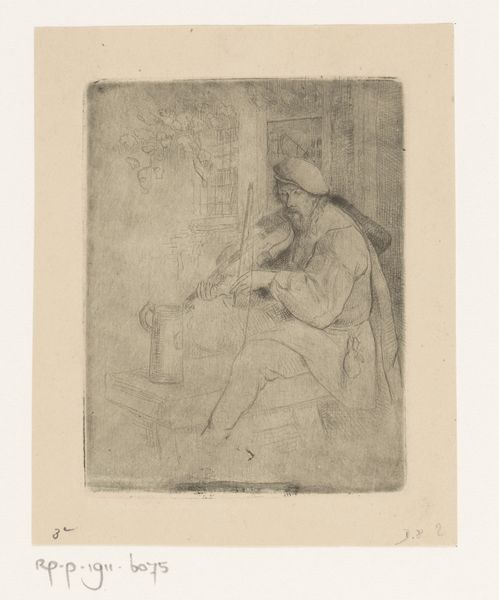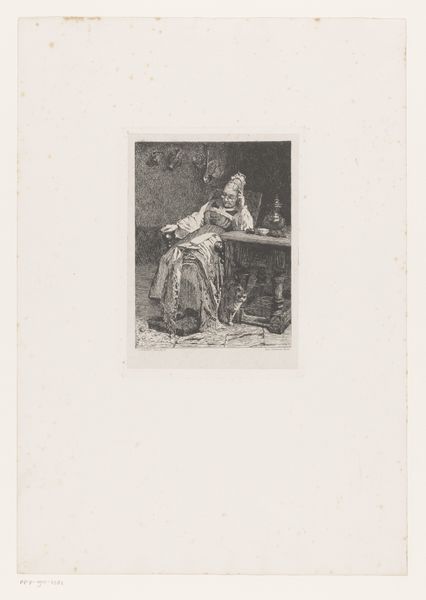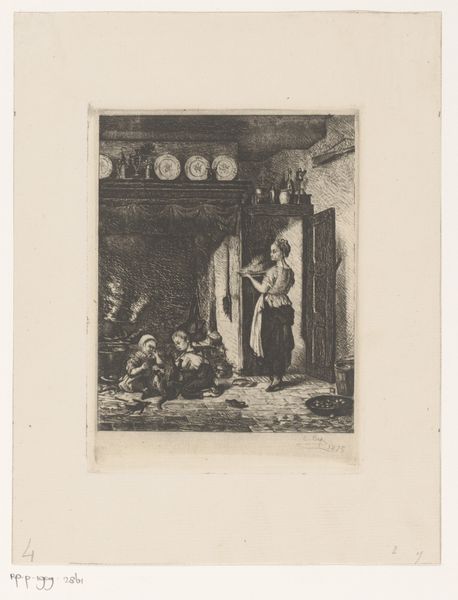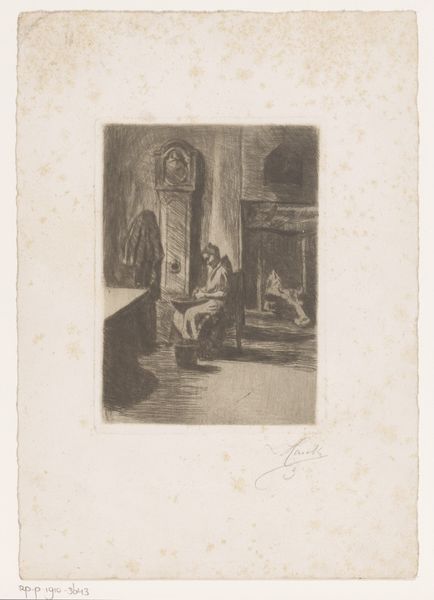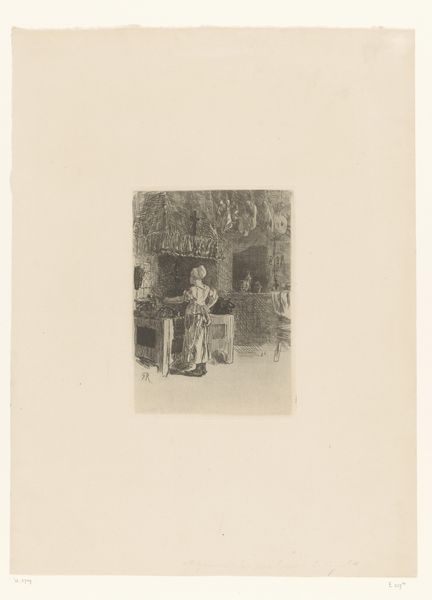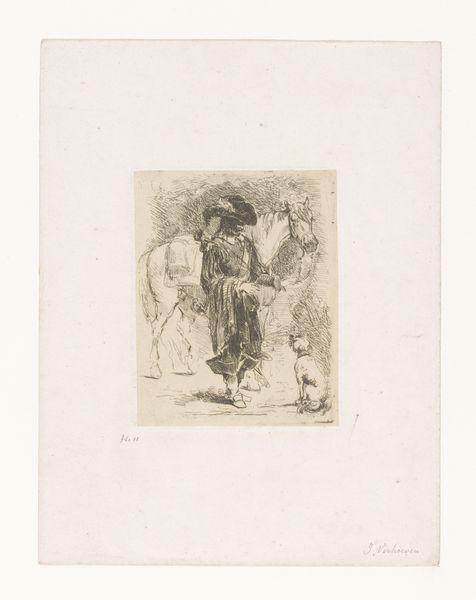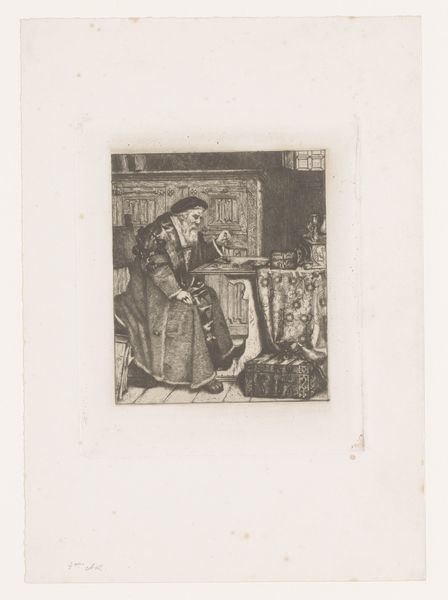
print, etching
#
narrative-art
#
baroque
# print
#
etching
#
old engraving style
#
figuration
#
history-painting
Dimensions: height 162 mm, width 138 mm
Copyright: Rijks Museum: Open Domain
Curator: This is an etching titled "The Return of the Prodigal Son," created by an anonymous artist after 1636. It resides here at the Rijksmuseum. What's your immediate impression? Editor: My breath caught. It feels both profoundly intimate and agonizingly public. That stark contrast—the father's embrace and the scrutinizing figures looming in the background—it speaks volumes. Curator: Indeed. The baroque style emphasizes the dramatic tension. The figures are tightly packed, and the print medium contributes to the immediacy; there’s a certain rawness in the etched lines, isn't there? Editor: Absolutely. It's a study in black and white, yet it conjures up shades of guilt, relief, judgment, and forgiveness. What strikes me is how the artist focuses less on the material splendor the son squandered, and more on the palpable *lack*— the father's tender hand and the son’s ragged appearance is heart wrenching. Curator: That focus mirrors a broader socio-economic dynamic: the reduction of narrative to the central dynamic. While we see what are likely representations of onlookers from the narrative itself and those possibly associated with domestic work, their representation in this piece makes clear who this piece emphasizes. Editor: A key interpretation is in that light and shadow play—it carves out a deeply emotional core. Like all morality tales, you just know they make the point of how difficult it can be, while using a narrative painting to demonstrate it visually. It leaves a lump in my throat, thinking of familial bonds stretched to breaking. It feels timeless and, honestly, universal. Curator: Absolutely. We observe a convergence of various material themes – a print's capacity for accessibility married to this era's style. Each impression contributing to an ongoing cycle of production, and ultimately the democratization of these stories for mass distribution. Editor: Makes you wonder about the engraver, doesn’t it? Did they consider the broader audience, how their craft would extend this very poignant, moralizing message to people far beyond the Rijksmuseum walls? Curator: I like thinking about it that way - the physical etching and reproduction of images being almost another part of the prodigal son’s own path and potential for mass interpretation, not just what we can view in front of us here. Editor: Agreed. This simple, unassuming print reverberates with echoes of remorse, hope, and, above all, the stubborn, messy endurance of love.
Comments
No comments
Be the first to comment and join the conversation on the ultimate creative platform.
